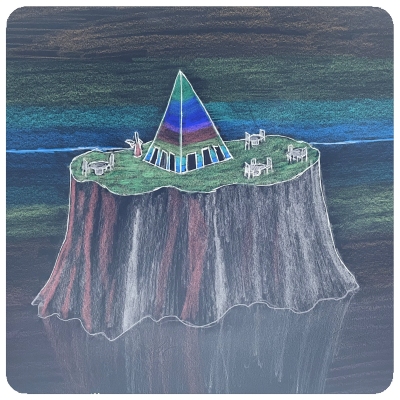
MVC Podcast 2: Trigintasex
& Fathoms' Numerals
[00:33:36] January 3rd, 2023
Introducing Charles Reuben, AKA "The Multiverse Cartographer."
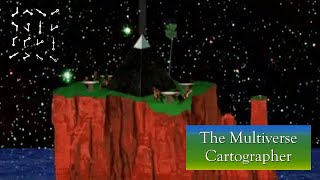
or

or listen through
or the RSS feed.
In this episode, I’ll recite chapter one. If this is the first time you’re seeing me, or hearing me talk about this, you may wish to click up here in the corner and visit The Multiverse Cartographer playlist, and maybe start with the first episode. In it, you’ll hear me talking about the primordial origins of the story, which was a story called “Second Fruit” in which the main characters of The New World Empire were first developed. Fair warning, though, in that first episode I do my best impression of “a normal person” and, further, I was getting over an illness when I recorded it, some kind of throat infection, so I wasn’t really at my best. As you can see by my Nyingma Ngakpa shawl, I just came in from a timeline where this is actually considered casual streetwear, and I didn’t have time to change. I hope you’ll forgive the breach of your native universe’s sense of normalcy.
Anyway, to help set up what I’ll be saying next, I wanted to read you another review. This one is for the first of the three books in this trilogy, “The Small Grey Mouse and Other Short Stories.” Now, of course, those who saw the first episode in this series already know what Mrs. Brunke thinks of the third book in the trilogy, but let’s see what Award-Winning Author, and former Chief Financial Officer of National Lampoon, Lorraine Evanoff had to say about the first book in the trilogy…
“Compelling answers to life’s illusive questions. Author Edward Reib writes on another plane, offering answers to life’s illusive questions such as, who really is the polyonymous Devil? Or, what if there really were peace on earth, or in this case in the universe? The unassuming title of this book notwithstanding, fans of breezy romance novels, or fleeting suspense, thriller, mystery genres may not get it at first. While some of the prose may seem demanding, overall, the writing is very approachable and satisfying. As a stalwart fan of A Course in Miracles, and its more approachable compendium The Disappearance of the Universe by Gary Renard, even I struggled through one short but very fascinating passage that used Elizabethan English (Reib is fearless). But I soon realized I just needed to let the writing flow, and the rest would take care of itself, expanding the reader’s mind like the infinite universe. In the form of short essays, riddles, haikus, and conversations, the recurring thread brings the reader full circle down the Yellow Brick Road to understanding our very existence, or at least some of the most illuminating ontological theorems I’ve ever read. And I’ve read some of the greatest. Reib includes candid life journeys that led him to his conclusions making them even more compelling. This book is true genius, theology converging with physics, including a roadmap of the multiverse, all melding into beautiful harmonious atonement. I’m suspicious that Reib is an alien or has returned to us from the future. In any case, he’s enlightened. It was a privilege to read this book.”
Not to toot my own horn, but I get that a lot. I’m also well-known for my award-winning humility. But seriously, though, she made reference to a recurring thread which leads one down the Yellow-Brick Road to understanding our very existence. This recurring thread was, of course, selections from The Interdimensional Coffeehouse, the best parts really, culminating in the creation of Larry the Librarian. The Interdimensional Coffeehouse was a podcast I produced from 2015 to 2017, consisting of 12 episodes.
It has its origins in The New World Empire. The Interdimensional Coffeehouse was the project which Charles the Grey was working on when he was interrupted by Blythe, who needed his assistance in breaking her best friend Simon out of prison. That is, the prison of the Drone-trance. We’ll get to all of that later.
In the second Mouse book, “Smaller Mouse,” highlights from The New World Empire were introduced. Again, the selections were basically key and pivotal moments, moments for which the rest of The New World Empire were in a way a frame, a world built to have a context in which these moments could take place.
Then, to put a nice ribbon and bow on all of this, I put out The Multiverse Cartographer. It was to complete the world, the frame, and the context for both The Interdimensional Coffeehouse and The New World Empire. It was intended for those who had already read and enjoyed the two Mouse books.
In the introduction, here you can see images of the Mouse books, as well as a list of chapters from the Mouse books which are necessary to have read in order to get a complete picture, as well as a key indicating that when the little grey mouse image appears, the missing piece is to be found in “The Small Grey Mouse,” and when the little Mickey Mouse appears, the missing piece is to be found in “Smaller Mouse.”
Today, I’ll begin with chapter one of “The Multiverse Cartographer” and whenever there is a little tiny Mickey Mouse, which almost looks like the little bullet-point that divides scenes or sections within the chapters, I’ll fill in the missing piece from “Smaller Mouse.” Wherever in “The Multiverse Cartographer” there is a picture of a small grey mouse, I’ll fill in the missing piece which can be found in “The Small Grey Mouse.”
If you’d rather read the Mouse books and The Multiverse Cartographer on your own, rather than having me explain them, I would suggest you stop watching these videos right now, and find the links in the description below.
If finances are a concern, as the Kindle versions of these books are a few dollars each, or if they aren’t available in your country, then keep watching. If you could, and would, be interested in reading them on your own, but you just really love watching me on your screen and listening to the sound of my voice, then by all means do continue, and thank you.
Also, I may reveal one or two things on here that perhaps weren’t so obvious, as in the etymology of the characters’ names I talked about in the first episode of this series.
And so, without further ado, chapter one: TRIGINTASEX & FATHOMS’ NUMERALS
Charles Reuben, “The Multiverse Cartographer,” in the process of mapping out the various versions of his own universe, as well as those of several others of the same type, and a few of other types, often found himself to have inadvertently been the cause of various phenomena he encountered. Due to the scale of the web of his travels in which he’d had an influence in his own past, present, and future, this resulted in several apparent paradoxes and causation loops that have since been studied by all aspiring Multiverse Cartographers.
It is common knowledge that, upon meeting the famous “Charles the Grey,” the half-Human half-Reticulan Venusian who created The Interdimensional Coffeehouse in the first place, Charles Reuben was surprised to learn that Charles the Grey had been named after him, even as he had been named after Charles the Grey.
Another such causation loop that is lesser-known, save by those Coffeehouse patrons who hail from Charles the Grey’s home universe, is that of the relationship between “Trigintasex” and “Fathoms’ Numerals.”
Anyone who’s been to The Interdimensional Coffeehouse more than briefly is sure to be well familiar with Trigintasex:
It is the mathematical language which provides the identifying marks, like serial numbers, of each of the nearly eight-septillion Coffeehouse islands and pyramids spaced evenly throughout the enormous oceanic sphere.
Those who frequent The Coffeehouse often develop the habit of writing them down, in order to meet with their friends or with one particular version of the ancient omniscient Barista, Clara.
The story of how this causation loop came to be is detailed in Charles Reuben’s journals, as follows:
The first time I visited The Coffeehouse as an adult, I remember stepping out onto the malachite floor, and looking around at the wooden tables and the people. I walked to the edge of the island, as I had as a child, looked down at the many-colored fish, and out at the other islands. I walked around the perimeter of the island, taking it all in from every angle.
At one of the tables, I remember four serious looking men all with stern expressions, each staring at the person across the table from him, and wearing black suits. At another table was a woman with pink hair, who appeared to be in her 60s, reading a book.
I approached the pyramid itself, and saw my reflection. Then, I became fascinated by the scenes on the other sides of the various doors, there being three on each side.
The door on the left of the nearest side led back into the room which used to be my dad’s den, the middle door on that same wall led to what appeared to be a red planet, but not red like Mars. It wasn’t dusty red, more of a blood red sky, and thick red fog. The door on the right led to green and rolling hills, with a blue sky.
I walked to right side to see the three doors around the corner. One door seemed to lead to total darkness, the next to kaleidoscopic changing lights, and the third to what at first appeared to be a sprawling metropolis but, upon closer examination, I saw that it was a large crystalline structure reflecting the many colors of some kind of rainbow nebula.
As I gazed at the nebula, I heard a familiar voice, a kind female voice, from behind me. “You must be new,” she said.
I turned to see a familiar woman who appeared to be in her late 20s, wearing a white T-shirt and jeans. She was holding a silver tray with a few drinks. She had brown eyes, brown hair, and was smiling with a kind of inner glow.
“I’m Clara,” she said, “the Barista.”
I offered my hand and said, “I’ve met you before.”
“You were much younger then,” she replied. She told me she’d be with me in a moment, and went to deliver the drinks.
I saw a kind looking older gentleman with spectacles sitting reading a newspaper at the table beside me. I approached and said, “Do you mind if I sit here?”
The man was very surprised to see me, stood up and said, “Charles Reuben!”
“Have we met?” I asked.
He laughed a great deal, and said, “The first time I met you, you were an old man! You told me that when you first arrived here as a young man, you met me when I was an old man!”
I was intrigued. He motioned for me to sit down, and we both sat at the table.
He shook his head, saying, “Ever since that day I’ve been a bit foolhardy, risking life and limb as a Multiverse Cartographer, because I knew I couldn’t die before I met you.” He smiled, thoughtfully. “Now that we’ve met, I should probably start being a bit more careful. Sorry, how rude of me, name’s Isaac.” We shook hands.
“What can I get you boys?” Clara asked, as if we were children.
Isaac’s face lit up, “Give me a scotch on the rocks!” He looked at me, remembered what he’d just said, and changed his mind, “On second thought, maybe I’ll just have a glass of water. No ice.”
I ordered a chai, and reached for my wallet.
Clara said, “Your money’s no good here,” and left.
Clara approached the central door of the pyramid, and the shimmering doorway vanished, revealing for a moment a sandstone brick hallway with torches on either side. As soon as she passed through, the shimmering Rectangle reappeared.
I said to Isaac, “So… Multiverse Cartographer?”
Isaac reached into his brown bag, pulled out a blank notebook and a pen, and handed them to me. It is with that pen that I am now writing, in that very same notebook.
He said, “Here, keep this, you’ll need it,” and pointed to the bottom left corner of the pyramid. I noticed, for the first time, a little square of symbols. It looked as if they were painted on in white.
Then, I opened the notebook and wrote the words “Multiverse Cartographer” so as not to forget the fascinating phrase.
He watched me write it, smiled and said, “Write down those symbols exactly as you see them.” I did so. Most consisted of a circle with a line connecting it to a filled circle, then another line hanging off the end in various arrangements.
After I finished, Isaac said, “Okay, I’ll explain it to you. We call this Trigintasex.”
“I beg your pardon?”
“It means 36. It’s a base 36 system, without a zero.” He pointed at one of the symbols in the book and said, “You start with the open circle, and whichever direction the line goes from there determines which group of 6 you’re starting with. See there’s 6 groups of 6 in 36.”
“Okay.”
“If the line goes straight up, you know it’s the 1st group of 6. If it goes up and to the right, like it was pointing to the 2 on a clock, you know that’s 7 through 12. If it’s pointing to the 4 on the clock, that’s 13 through 18. Is it starting to make sense?”
“I think so. If it’s pointing down is that 19 through 24?”
“You’ve got it. Then the line which points off the filled circle tells you which of those 6 options it is.”
“Okay, so this here represents a 1?”
“Yes, but notice where it’s positioned.”
“2nd row, 3rd from the left.”
“It’d be better to think of it as 2nd row, 2nd from the right.”
“Why is that?”
“When you write the number 111, which 1 is the smallest?”
“The 1 on the right.”
“Yes. Same thing. You start at the top on the right. If that were a 1, it would have the value of 1, but since this 1 is on the second row in the second position it, has a value of 60,466,176.”
“Okay you’ve lost me,” I said.
“Just bear with me.”
Clara arrived with our drinks at this point, “One water no ice, and one chai.” We said thank you and returned to the lesson.
He said, “Here in the upper right corner, this is 1 through 36. It works the same way as our base 10 system. So, if you have a number on the far right, and let’s say it’s 1, you know that means 1, but if it’s in the second position over you know it means 36.
“Oh!” I said, finally understanding.
“Now it’s a little different from the decimal system, where we have a zero. 36 in the first position is 36, and 1 in the second position is also 36, not 37.”
“Right, okay.”
Isaac asked, “And 2 in the second position?”
“Would be 72.”
“Exactly. 36 in the second position would be 1,296.”
I laughed and said, “I think I need to brush up on my multiples of 36!”
Isaac said, “Now that you’ve got the idea, I’ll let you work it out from there. Knowing how it works, you can now determine how many of these Coffeehouse islands there are in this place.”
“36 to the power of 16?” I suggested.
Isaac nodded, “There are 7 septillion, 958 sextillion, 661 quintillion, 109 quadrillion, 946 trillion, 400 billion, 884 million, 391 thousand, and 936 Coffeehouse islands.”
“That’s a lot of islands!” I exclaimed, my puny mind having been blown.
He continued, “Keep in mind that each of those islands has 12 doors leading to different places in the Multiverse, and the doors often change, popping in and out of different universes.”
At this point, both my mind and bladder were full, “I don’t mean to interrupt, but is there a restroom here?”
Isaac laughed and said, “Here, I’ll show you how it works.”
He approached the central door of the nearest side and put his right hand up on the mirrored pyramid wall just to the right of the door. He looked up toward the apex of the pyramid and said, “Tremont Hotel, Baltimore, early 21st century Gregorian. Men’s public restroom, 20 minutes before anyone else comes in.”
The view on the other side of the shimmering Rectangle shifted to the most beautiful public restroom I’ve ever seen. He said, “You just tell it where you want to go.”
“Thank you!”
Isaac told me, “I may not be here when you return. The next time you see me, I’ll be in a hurry. The third time, we’ll get all caught up.”
“Well, it was really nice meeting you, Isaac!”
When I returned, he was gone, but my chai was still on the table. I picked it up and walked back to the edge of the island. After a while, I decided to try out this Multiverse exploration thing, and walked back to the pyramid.
I started browsing the worlds that were on the other side, which would change every so often. The red planet was still there, but it didn’t look very inviting. I eventually came around and saw one that looked interesting.
The sky was sort of a bluish greenish gray, with white clouds, and a mountainous landscape. There were these mechanical looking things hovering up in the air. I stepped up very close to the doorway, and heard and felt a low vibration. I peeked my head through the shimmering Rectangle, and the sound became much louder. A great rumbling sound coming from the sky, like many large horns shaking, vibrating the rocks.
I stepped through all the way, and looked around. I looked back, and saw that the doorway back into The Coffeehouse was just floating in the air. I walked away from it, to an edge and looked down. I saw that it was quite a drop, so I backed away.
I looked up, and wondered how many of these great machines were hovering and making all that racket, and what it was they were doing. I noticed there was a downward breeze blowing from the one that was passing over me.
After it passed, the downward breeze stopped, and my throat began to tickle and burn. I clutched my hand to my throat and realized I should get back into the Coffeehouse immediately.
I quickly walked toward the doorway, but my feet were pushing the gravel and small rocks down that steep drop I had just seen. I reached with both hands toward the door, fell, and started climbing on all fours. I felt my heart beating in my head, and my vision was filled with what looked like snow on TV screen.
Everything faded to black, and I slid down the side of the mountain, unconscious.
And that concludes chapter one, ending on a bit of a cliff-hanger. So, as you might have noticed, there are, as of now, two levels being presented. This voice seems to be that of a kind of text-book for Multiverse Cartographers which is describing the events in the life of Charles Reuben, the original Multiverse Cartographer, in the past as if from some point in the distant future. This may seem odd, as time-travel is an option in this world. Nay, ‘tis odd. I know not seems.
Anyway, I remember, after part of the ancient city of Alexandria was discovered at the bottom of the Mediterranean Sea, I used to enjoy depicting scenes from our modern world, or even plans for the future, as being at the bottom of the sea. Something about the implied immense passage of time, the vastness of the sea being above the things we take for granted, really helped to accentuate and put into perspective the temporal nature of our present lives.
The next level down is the voice of Charles Reuben speaking in the first person. This is understood to be selections taken directly from his journals. This whole chapter takes place in The Interdimensional Coffeehouse, and we have not yet been introduced to The New World Empire.
The imagery of the Coffeehouse is fairly clear, I think. There are many islands on a vast sea, the edge of each island being sandstone cliffsides, the surface of each being a flat malachite floor with wooden tables, and on each island there is a pyramid with three doors on each side. These doors lead to absolutely any place, at any time.
Clara, the barista, helps to clarify things, and for her everything is perfectly clear. To tell you the truth, perhaps some of you may have already suspected, she was inspired by the character of Clara from Doctor Who.
Isaac, I believe it was clear, is a student of Charles Reuben, only now the roles are reversed. Per Charles Reuben’s instructions later in life, Isaac is here at this particular time to meet Charles Reuben on his first day in The Coffeehouse as an adult, to explain the numerals, and to give him the notebook.
It is worth noting that 36 is the square of 6, which is related to the Sun and the sephira Tiphareth, while 16 is the square of 4, related to Jupiter and Chesed. The path between these two sephirot, in the Hermetic Kaballah, being The Hermit, and Virgo. Also worth noting is the etymology of his name being “God laughed,” particularly in the moments where he laughs, as when Charles Reuben asks if The Interdimensional Coffeehouse has a bathroom.
The place where Charles Reuben finds himself in his first attempt to explore the multiverse, that mountain with the strange machines hovering in the air, will be further explained in chapter two, which I’ll read next time.
There are a few things that set up this first chapter, which will come in later chapters in the form of flash-backs, but I thought this would be a good place to start the book, as its primary focus is on the titular character, Charles Reuben, “The Multiverse Cartographer.” The island and the pyramid doors are explained in detail, and so on. This was basically, word for word, episode two of the old podcast called The Interdimensional Coffeehouse.
Nothing from the Mouse books needs to be read as this point to give any further depth into or clarification of chapter one. In fact, this is a case where actually the opposite is true. There is a chapter toward the beginning of The Small Grey Mouse, a chapter called “The Multiverse Cartographer.” It begins shortly after Charles Reuben slides down the mountain, unconscious. It is the chapter which Lorraine referenced as being a bit difficult to understand, being in Elizabethan English. Actually, that whole chapter of “The Small Grey Mouse” is contained within chapter two of “The Multiverse Cartographer.” In “The Multiverse Cartographer,” though, it is all read from Charles Reuben’s notebook, and he has taken the liberty of translating the difficult to understand Elizabethan into regular modern English. Plus, there is a bit at the beginning, and a bit at the end, which help to clarify how he got where he ended up, and how he got back afterward. We’ll get into all of that in the next episode.
I hope you enjoyed this second episode of The Multiverse Cartographer video recitals. By the way, if you’re considering purchasing copies of these books in paperback, might I suggest taking a look at something I’ve put together very recently.
It’s called “The New World Empire & The Interdimensional Coffeehouse.” I don’t have a copy of it yet, and it will probably be at least another week or two before I do, but naturally I’ll show it to you when I receive it. It includes the whole trilogy, both the Mouse books, and “The Multiverse Cartographer,” as well as a fourth section which includes the original “Second Fruit” story I wrote in 1997, which I later scrapped and started over with what became “The New World Empire,” using basically the same characters at the center of the story.
There is also, in the fourth section, a short chapter called, “The Cutting Room Floor.” I mentioned in the first video in this series that very little was left on the cutting room floor. What was, in other words what parts of The New World Empire which were left out of both “The Multiverse Cartographer” and the Mouse books, was included in that chapter called “The Cutting Room Floor.” I’ll be reciting those as they come up at the appropriate times, in these recitals from “The Multiverse Cartographer.” I’ve made this complete trilogy book, with the bonus content, specifically for you, those watching this video series. I haven’t posted any links or announcements about it anywhere, and I don’t plan to. So far, before mentioning it here, now, in this video, one person has already purchased a copy, presumably having seen it on the Amazon book menu. So, that’s fun.
That’s all for now. If you’re enjoying this series, please feel free to “Subscribe” to this YouTube channel, The Multiverse Cartographer, and we’ll continue next time with chapter two.
Until then.
 |
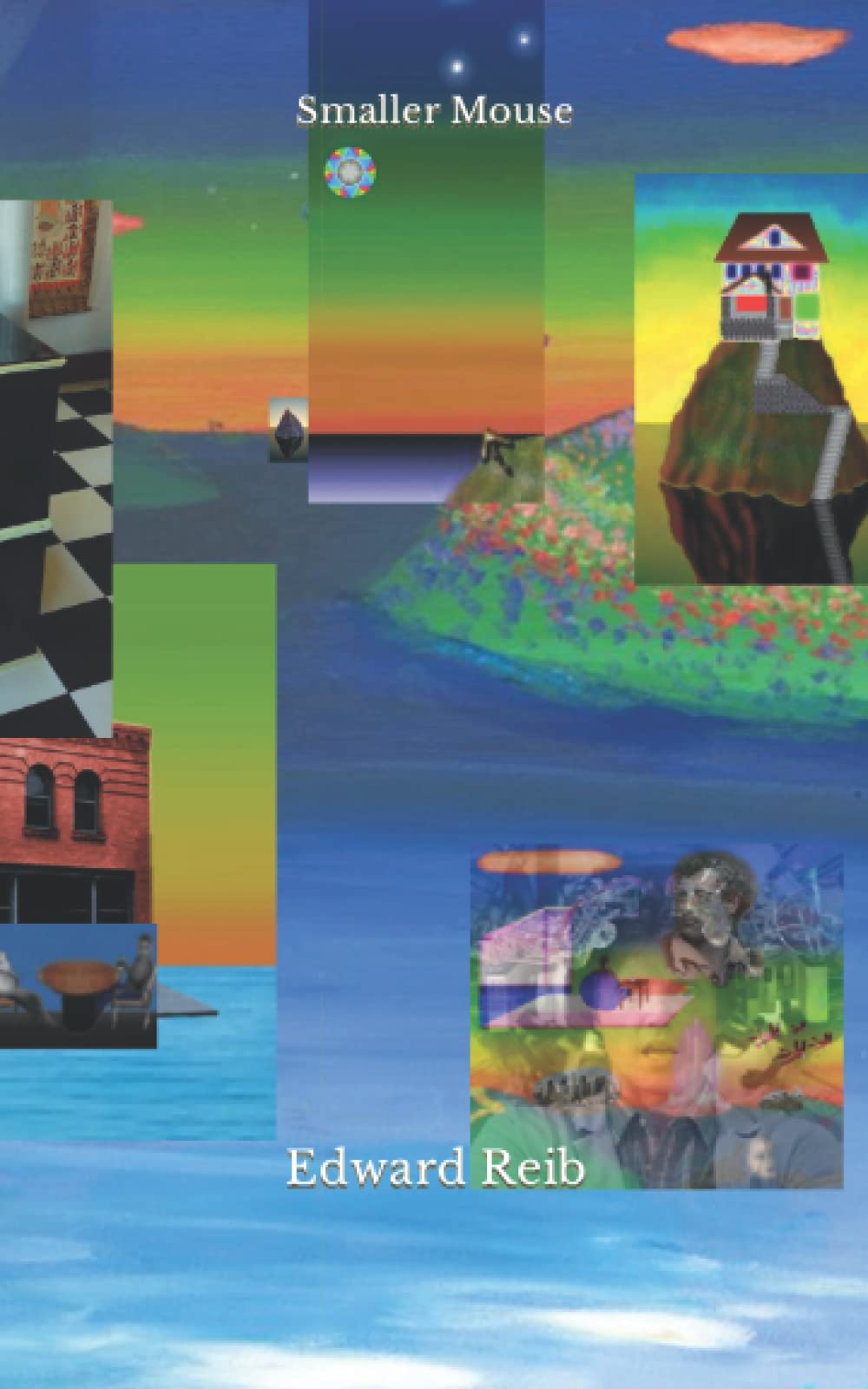 |
 |
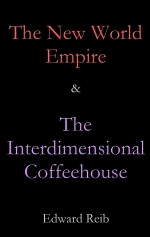
|
 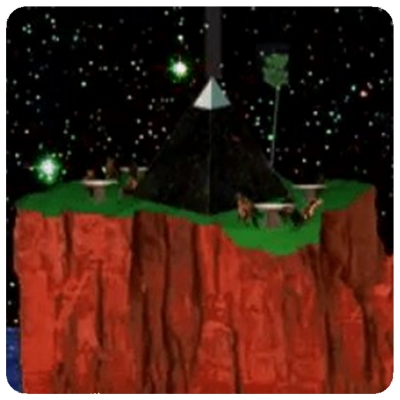 |
 |
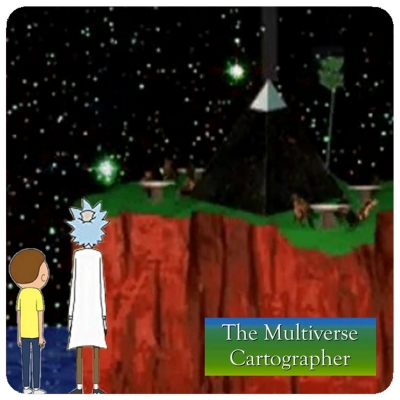  |
